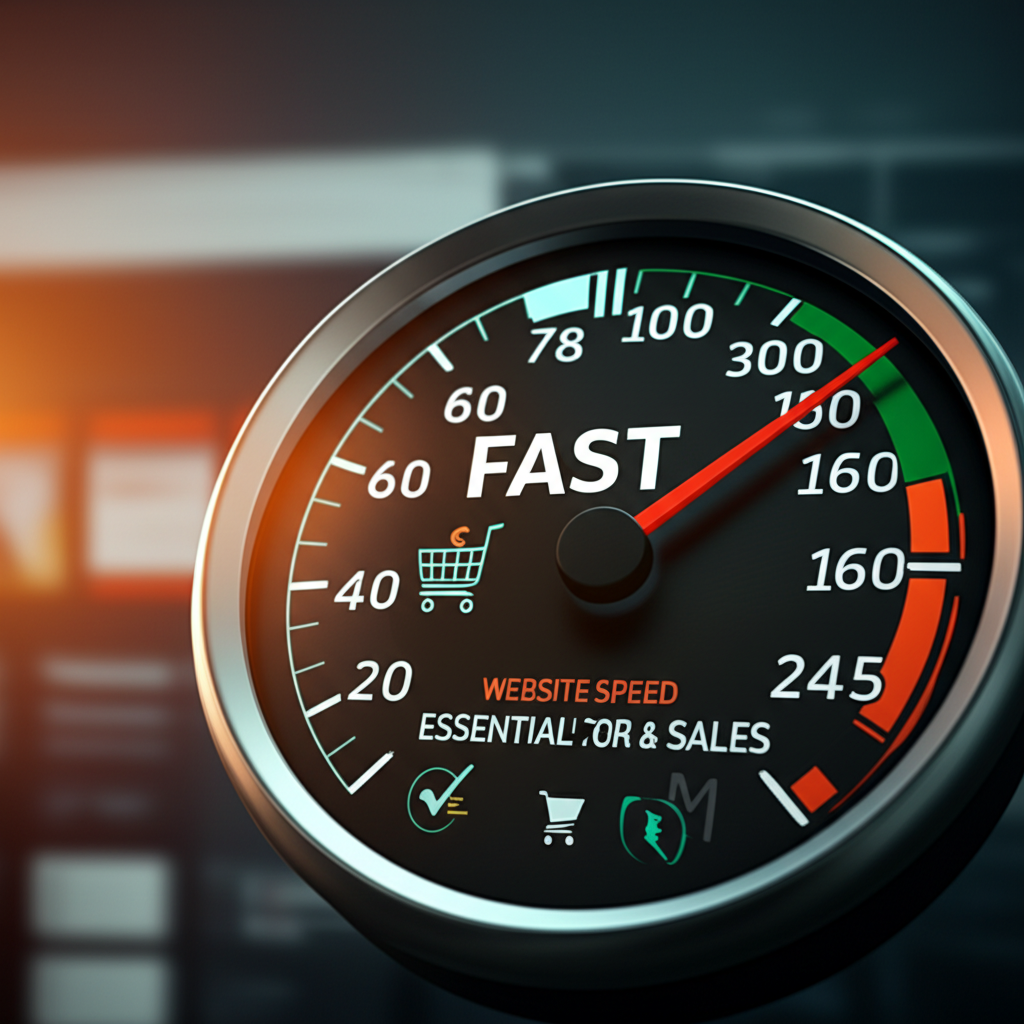- Why Website Speed Matters for SEO
- Impact of Website Speed on Search Engine Rankings
- Website Speed: A Crucial Factor for Sales
- How Website Speed Influences Conversions
- Optimizing Your Website for Speed
- Conclusion: Prioritize Website Speed for Success
Website Speed: Essential for SEO & Sales
Website speed is a critical factor for both search engine optimization (SEO) and sales. In today’s fast-paced digital world, users expect websites to load quickly and efficiently. A slow-loading website can lead to higher bounce rates, lower conversion rates, and ultimately, lost revenue. This article explores the importance of website speed, its impact on SEO and sales, and practical strategies to optimize your website’s performance.
Why Website Speed Matters for SEO
Search engines like Google prioritize user experience. A key element of a positive user experience is a fast-loading website. Google has explicitly stated that page speed is a ranking factor for both desktop and mobile searches. This means that websites that load quickly are more likely to rank higher in search results, leading to increased organic traffic.
Impact of Website Speed on Search Engine Rankings
A slow website can negatively impact your search engine rankings in several ways:
Increased Bounce Rate: When a website takes too long to load, users are more likely to abandon it before it fully renders. This is known as a “bounce.” A high bounce rate signals to search engines that the website isn’t providing a good user experience, potentially leading to lower rankings.
Reduced Dwell Time: Dwell time refers to the amount of time a user spends on a website after clicking through from a search engine results page (SERP). A slow-loading website can frustrate users, causing them to leave quickly and reducing dwell time. Shorter dwell times can signal to search engines that the content isn’t engaging or relevant, impacting rankings negatively.
Crawling Budget Limitations: Search engines have a limited “crawling budget” for each website. This refers to the number of pages they can crawl and index within a given timeframe. A slow website can hinder the crawling process, preventing search engines from indexing all of your pages effectively. This can limit your website’s visibility in search results.
Website Speed: A Crucial Factor for Sales
Beyond SEO, website speed directly impacts your bottom line. A fast-loading website can significantly improve conversion rates and boost sales.
How Website Speed Influences Conversions
Improved User Experience: A fast website delivers a smooth and seamless user experience. Visitors can easily navigate, browse products, and complete transactions without frustration. This positive experience fosters trust and encourages conversions.
Reduced Cart Abandonment: Slow loading times during the checkout process can lead to cart abandonment. Customers may lose patience and abandon their purchases if they encounter delays or errors. Optimizing website speed can streamline the checkout process and reduce cart abandonment rates.
Mobile Friendliness: With the increasing use of mobile devices, optimizing website speed for mobile is crucial. Mobile users are even more sensitive to slow loading times. A fast mobile website enhances the user experience and drives mobile conversions.
Enhanced Brand Perception: A fast-loading website reflects professionalism and attention to detail. It reinforces a positive brand image and builds trust with potential customers. This positive perception can significantly impact purchasing decisions.
Optimizing Your Website for Speed
Improving website speed involves a multifaceted approach. Here are some key strategies to optimize your website’s performance:
Optimize Images: Large image files can significantly slow down your website. Compressing images without compromising quality can drastically improve loading times. Use appropriate image formats like WebP for better compression.
Leverage Browser Caching: Browser caching allows users’ browsers to store certain elements of your website, such as images and scripts, so they don’t have to be downloaded every time they visit. This can significantly speed up subsequent page loads.
Minimize HTTP Requests: Each element on your website, such as images, scripts, and stylesheets, requires a separate HTTP request. Reducing the number of these requests by combining files and using CSS sprites can improve loading times.
Choose a Fast Web Host: Your web hosting provider plays a crucial role in your website’s speed. Opting for a reliable and high-performance hosting provider can significantly impact loading times. Consider using a Content Delivery Network (CDN) to distribute your website’s content across multiple servers globally, reducing latency for users in different locations.
Minify CSS and JavaScript: Minifying your CSS and JavaScript files removes unnecessary characters and whitespace, reducing file sizes and improving loading times.
* Use Asynchronous Loading: Implement asynchronous loading for scripts to prevent them from blocking the rendering of the rest of the page. This allows the page to load progressively, improving the perceived speed for users.
Conclusion: Prioritize Website Speed for Success
In conclusion, website speed is a vital factor for both SEO and sales. Optimizing your website’s performance can lead to higher search engine rankings, increased organic traffic, improved conversion rates, and ultimately, greater business success. By implementing the strategies outlined above, you can ensure that your website loads quickly and efficiently, providing a positive user experience and driving positive results for your business. Don’t underestimate the power of a fast website – it’s an investment that pays off in multiple ways.











Leave a Reply